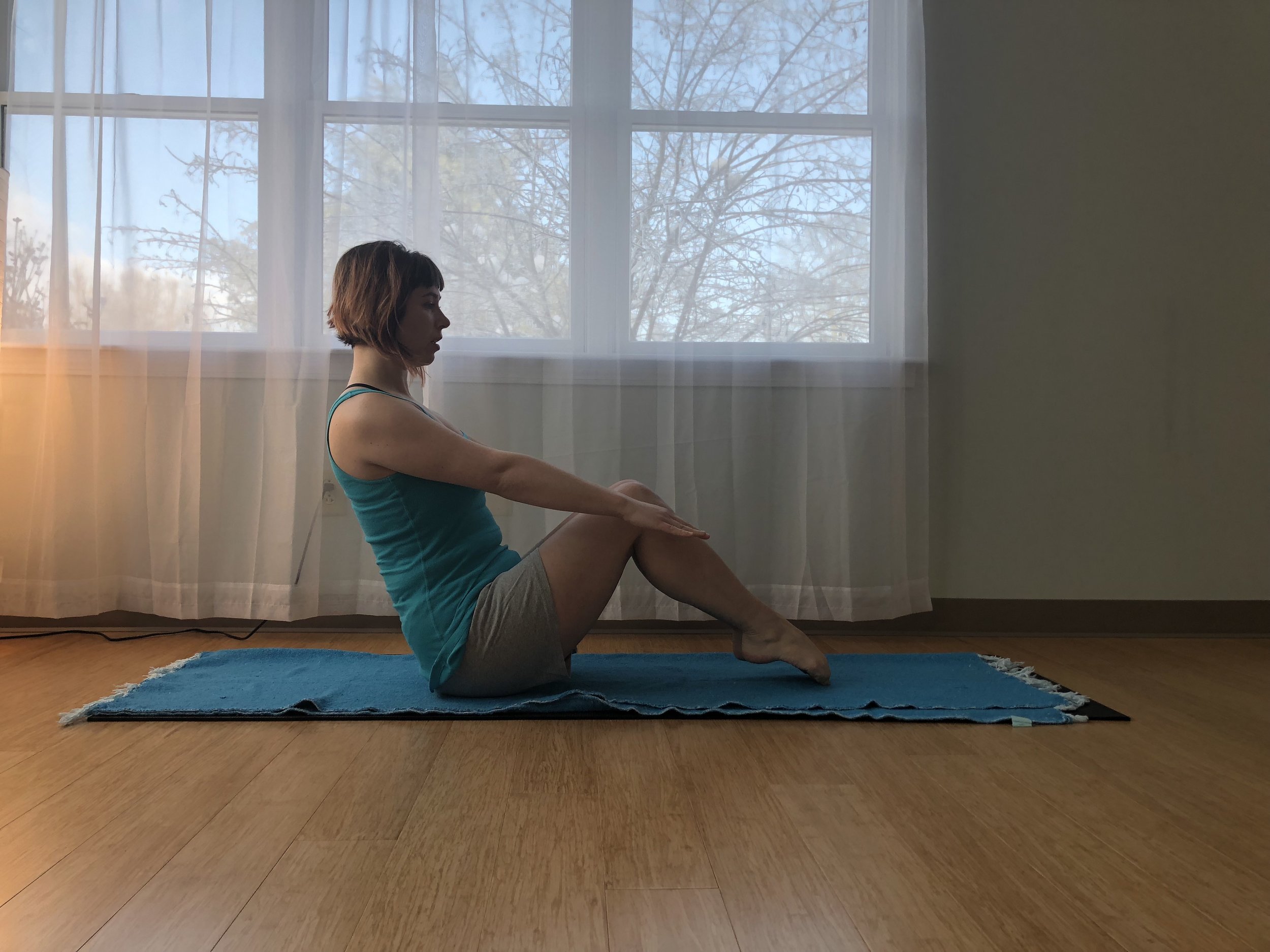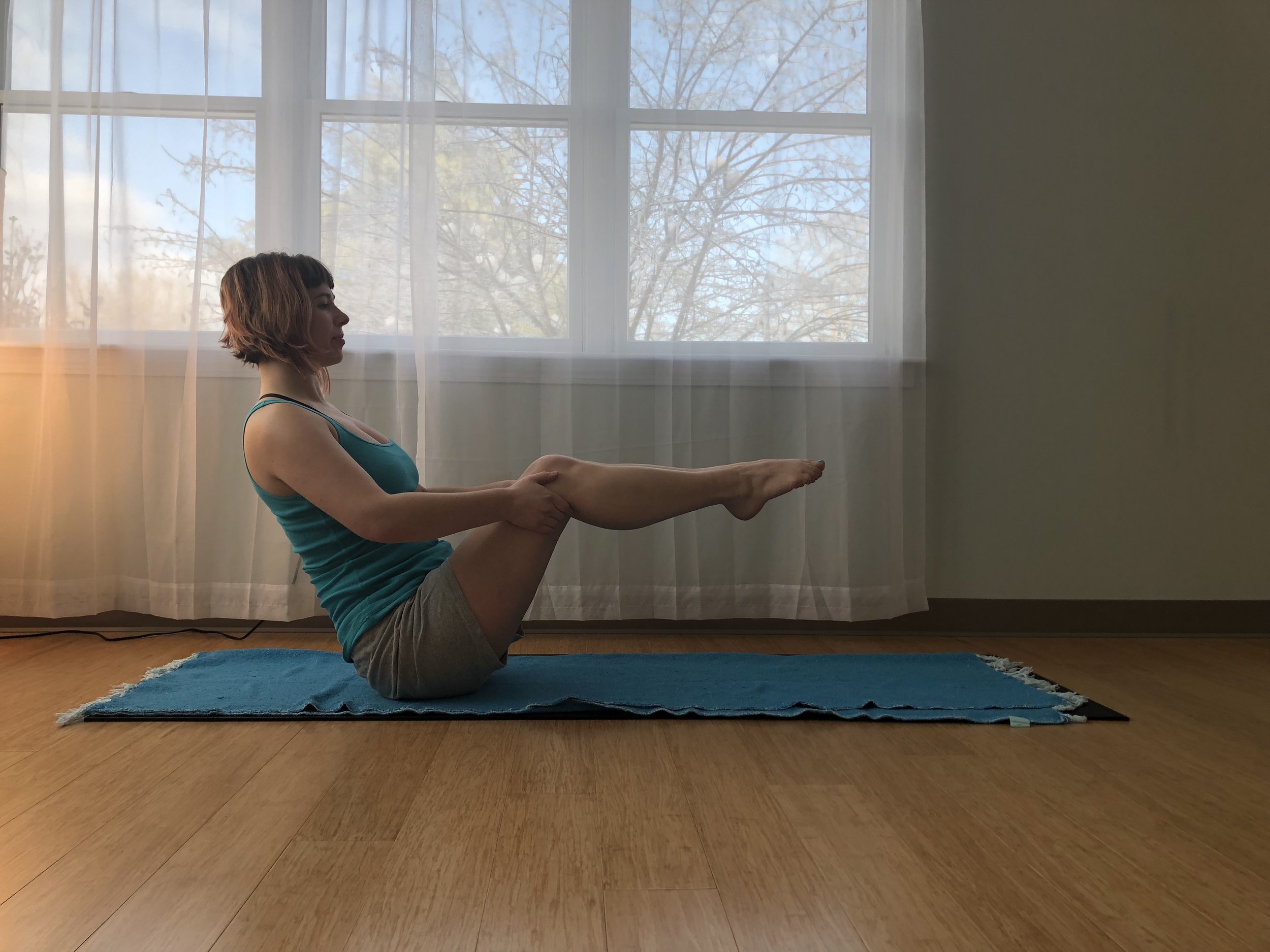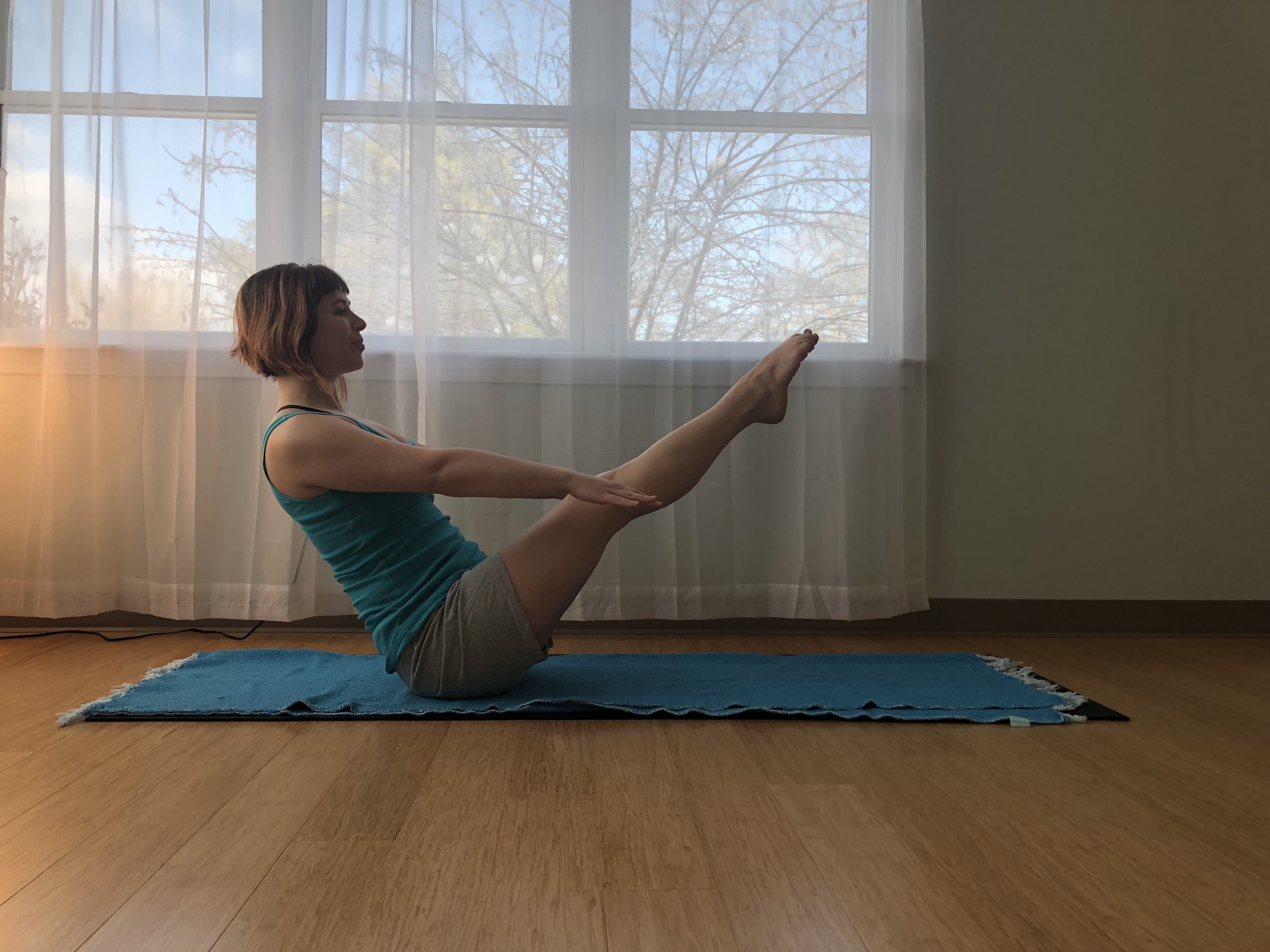Hello and welcome to the first in a series of posts designed to assist dancers in maximizing performance while achieving and maintaining wellness. Future posts will also include content from Elizabeth Arris, L.A.c, DAcOM, who is a dancer and acupuncturist at Jade. These posts are designed to meet you where you are, whatever level, discipline of dance and stage of your career/participation. As a former dancer and a physical therapist I am very excited to see the worlds of healthcare and dance connecting for the betterment of both. Yoga is a thread that has connected my relationship with movement and my work as a healthcare provider. It was a faithful friend throughout my dance career and during my doctorate studies in physical therapy. Yoga also helped to ground me when I started working travel jobs just out of school and is an even bigger part of my life now that I am a certified yoga instructor. I see my yoga practice as a key tool in injury avoidance and hope to use it throughout my dance career.
As dancers we are no strangers to pain. When that pain stops us from dancing it can have a big impact on both one’s career and quality of life (Shah). Yoga is a good fit for dancers and can be a cross training option that will help the dancer reduce their risk for injury, recover faster from an existing injury and help the dancer learn from past injuries. Dancers are athletic and yet unlike athletes in many ways. One difference from sports athletes is the types of brain waves emitted when performing a motor task (Ermutlu). Although dancers have exceptional strength and motor control they tend to lack cardiovascular endurance (Roussel).
Due to the demands of dance as an artform, dancers tend to limit their cross training in order to avoid adaptive changes to their bodies that would alter their aesthetic. However, with overuse injuries being the most common type of injury for dancers, cross training is an important part of injury prevention (Bronner). For instance, when I was training in ballet I would have felt misunderstood by a healthcare provider who suggested I do squats. I would be fearful that squats would bulk up my quadriceps which could negatively affect my lines. These demands make it difficult to create a cross training program. Dancers require tailored programs designed for their special needs. Dancers can not simply follow injury prevention plans that have been developed for athletes.
There are three types of preventative care: Primary prevention is related to avoiding an injury in the future (no injury has occurred), secondary prevention is decreasing the impact of an existing injury (faster recovery from current injury episode), and tertiary prevention is related to decreasing likelihood of reinjury after recovery (learning from past injury). Evidence suggests that between 40-94% of ballet and modern dancers are injured annually (Hincapie). That means more than half of the dancers in a given company or training program are likely to be injured during a given year. These injuries can be devastating to a dancer’s career and have social, emotional, and economical impact on the injured dancer’s life (Macchi). Research indicates that dancers who seek assistance with their pain from a physical therapist right away are less likely to have a debilitating injury (Ojofeitmi).
Due to the high impact of an injury to a dancer’s life, a holistic approach to a preventative program is important. Yoga is a good fit for addressing psychological coping mechanisms, improving cardiovascular endurance and maintaining a dancer’s physical aesthetic. During a flow yoga class the yogi will continue to move for up to an hour and a half with short pauses while emphasizing breath work. This provides cardiovascular loading that is not present in a dance class where dancers tend to dance intensely for short periods of time and then stop. Unlike many cross training options, yoga is unlikely to result in unwanted adaptation and hypertrophy of dancers’ muscles. Yoga is a non-competitive physical activity that bridges psychological coping mechanisms, such as using breath and focusing inward, with mindful movements. These skills can be directly applied to enhancing dance performance. Participating in self-care is important throughout the lifespan. The time that is put in now will not only have a positive effect on performance and career longevity but could have an impact on health in retirement. As with concussions for football players, repeated stress to the body has lasting effects after the dancer has retired from their professional career. Retired dancers are more likely to have difficulty walking when they get older compared with the general population (Heliovaara).
Although I encourage you to seek a physical therapist who is familiar with yoga there are some activities I would recommend for general primary prevention. These are intended for those who are not recovering from a current injury and wish to prevent injuries that have not occurred. You may also benefit from seeing a physical therapist to tailor a prevention program specifically for you, based on your body type, dance medium, and your idiosyncratic impairments. That being said most dancers can benefit from core stabilization, movement with breath and meditation techniques. So let’s get started and do some yoga!
Sample activities to try at home:
Asana (movement) activity:
Boat pose is a good opportunity to practice listening to what your body needs rather than pushing your body to perform and achieve a visual goal. You can probably perform this pose exactly right without using the intended muscles and hold it for as long as a choreographer might want. However, if you perform the pose like that you will not be practicing in a way that results in improved core muscle strength. Boat pose has many variations allowing you to adjust to your body’s needs. If you feel your back muscles or the muscles in your legs working more than your abdominals then you haven’t found your sweet spot and should adjust until you feel your abdominal muscles working.
Boat Pose (Navasana)
Getting into boat pose
Variations
Getting out of pose
Mindfully return feet to the ground. See if you can now become taller at the back and remember this feeling throughout the day and when you are dancing. It is especially helpful to activate your abdominal muscles before attempting a turn sequence. Try doing a pirouette with your abdominals relaxed and then with them contracted and see if you can feel the difference.
Pranayama (breathing) activity:
Find a quiet place to sit. You may sit in a chair or on the floor. Close your eyes and feel yourself getting taller like there is a string coming from the top of your head drawing you upwards towards the sky. Feel your sit bones firmly planted on the earth or your chair. Pay attention to the environment around you. What do you hear? What is the temperature like? Do you smell anything? Bring your attention to your breath and just observe your breathing. Is it shallow and fast, or deep and slow? Where do you feel your body moving with your breath? Does your stomach move out and in or does your chest move up and down? Simply observe your body without judgment. Begin to count your breaths down from 10. Breathe in, 10, out, 10. Breathe in, 9, out 9. Continue until you get to 1 at your own pace and then rest. Take a moment to thank yourself for taking the time today to slow down and focus. Remember this simple exercise and perform it before experiencing a stressful event such as a performance or an audition. This can help to calm your sympathetic nervous system and remind you to be present and pay attention to your body.
If you want to start a home practice but don’t know where to start there are some online resources. Some good introductory classes I would recommend to do at home include this foundation of sun salutation one. Go through the video and then try going through the sun salutation on your own more quickly several times in a row for cardiovascular endurance. See how many you can do before you are short of breath. Make sure you can still talk to ensure you are loading your cardiovascular system appropriately.
I hope you have enjoyed reading this post. If you would like to hear more about how our team here at Jade can use our expertise to benefit the dance community in Maine contact us with questions or stop by to see a physical therapist, acupuncturist or attend a yoga class
Have fun, and stay happy, healthy and dancing!
REFERENCES
Shah S, Weiss D, Burchette R. Injuries in professional modern dancers: incidence, risk factors and management. J Dance Med Sci. 2012; 16(1): 17-25. http://lc2ye4ea9k.search.serialssolutions.com/OpenURL?sid=Entrez:PubMed&id=pm id:22390950
Ermutlu N, Yucesir I, Eskikurt G, Temel T, Isoglu-Alkac U. Brain electrical activities of dancers and fast ball sports athletes are different. Cogn Neurodyn. 2015; 9(2): 257- 263. doi: 10.1007/s11571-014-9320-2.
Roussel NA, Vissers D, Kuppens K, Fransen E, Truijen S, Nijs J, Backer WD. Effect of physical conditioning versus health promotion intervention in dancers: A randomized controlled trial. Man Ther. 2014; 19(6): 562-568. doi: 10.1016/j.math.2014.05.008.
Bronner S, Ojofeitimi S, Rose D. Injuries in a modern dance company: effects of comprehensive management on injury incidence and time loss. Am J Sports Med. 2003: 31(3): 365-373. doi: 0363-5465/103/3131-0365$02.00/0
Hincapie CA, Morton EJ, Cassidy JD. Musculoskeletal Injuries and pain in dancers: a systematic review. Arch Phys Med Rehab. 2008: 89(9): 1819-1829. Doi:10.1016/j.apmr.2008.02.020
Macchi R, Crossman J. After the fall: reflections of injured classical ballet dancers. J Sport Behav.1996; 19(3): 221-234. http://connection.ebscohost.com/c/articles/9608291418/after-fall-reflections-injured- classical-ballet-dancers
Ojofeitmi S, Bronner S. Injuries in modern dance company: effect of comprehensive management on injury incidence and cost. J Dance Med Sci. 2011; 15(3): 116-126. http://lc2ye4ea9k.search.serialssolutions.com/OpenURL?sid=Entrez:PubMed&id=pm id:22040757
Eusanio J, Thomson P, Jaque SV. Perfectionism, shame, and self-concept in dancers: a mediation analysis. J Dance Med Sci 2014; 18(3): 106-114. doi: 10.12678/1089- 313X.18.3.106.
Heliovaara M, Kettunen J, Malmivaara A, Roine R, Ronkko R, Sainio P. Musculoskeletal pain, disability and quality of life among retired dancers. J Dance Med Sci. 2007; 11(4): 105-114. https://www.researchgate.net/publication/233523415_Musculoskeletal_Pain_Disabilit y_and_Quality_of_Life_Among_Retired_Dancers







